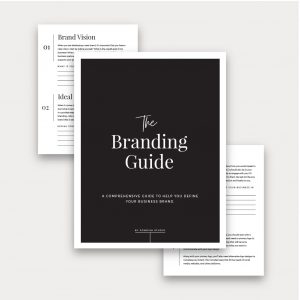
Category:
How to Define Your Brand?
Defining your brand is very important to the success and longevity of your business. Your branding delivers the message of who you are and what you do, influences your marketing and advertising efforts, and plays a big role in developing a relationship with your audience. Branding also establishes you in your marketplace and sets your business apart from the competition.
Brand Vision
Determining a vision for your brand is key to its future. Think about your big picture goals – what would you like your business to ultimately become? Ask yourself what you want to achieve in the long run and what accomplishments will represent success to you. By outlining and identifying these concepts at the beginning of your planning, you’ll be able to ensure that the brand you cultivate around your business will support your goals.
Ideal Audience
Your audience should be top of mind when you are making decisions about branding. By considering your target audience, who they are, what their interests are, and what they want, you can carefully choose the voice for your brand messaging as well as a style that will speak to them with appeal. Your color palettes, fonts, imagery, and other visual elements should also be desirable to your audience and in line with their interests. Creating a clear definition of your ideal audience will help you to shape your brand in a way that will be attractive to them.
Brand Voice
Any written content you create should be consistent with the voice of your business. Communicating authentically and genuinely in your messaging will allow audiences to feel that they are getting to know you and will develop a sense of trust in your brand. While your messaging should be targeted, strategic, and intentional, you should also be yourself and true to your voice. Avoid constant plugs and pushes to sell, and instead, create opportunities for engagement and interaction. As your customers learn who you are, they will begin to feel connected and loyal to your business.
Visual Brand
Creating your visual brand begins with establishing a primary logo as well as several alternative logos. Your primary logo should serve as a representation of your business and ideally will be distinctive, versatile, and appropriate for your brand. Consider what you want to communicate with your logo design as well as how you plan for the logo to be used. Alternative logo designs, or variations on your primary logo, are ideal for growing your brand’s presence across a growing variety of platforms, such as social media and websites.
Font and Color Palette
Your audience will come to recognize the look and feel of your business, and it’s essential that the visual elements of your brand are consistent across all platforms. You want your brand to be identifiable and memorable, so it’s important that the color palette and fonts you choose are used throughout your business. The fonts and colors used on your business website, social media profiles, and any print collateral should be cohesive and tie together as one brand.
Imagery
Creating consistency in the images you share with your audience will help them get to know your business visually. Images are an aspect of your business that customers will come to associate with your brand, and they should embody your business values and style. Consider if your brand were a person, what might they want to do and see? The images your business shares should inspire your target audience to keep their eyes on you, and even better, follow you and engage with you.
Social Media
Thanks to social media, it has never been possible to quickly reach and interact with so many potential clients as it is now. Social media is an amazing way to connect with your audience and it should serve as an extension of your website. Pay attention to profile details such as using the correct sizing for your profile images and creating concise biographies that convey (in your own voice) what your business does. How you depict your brand in your profiles, as well as the imagery and content that you share to your networks, should allow your audience to quickly develop an impression of who you are and what you do.
Website
Your website presents all the different elements that contribute to your brand, and it is the digital center for your business. Websites are a prime resource that potential customers will count on to learn what you have to offer and what you stand for. As a visual presentation of your brand, a website should feature tailored messaging, imagery associated with your business, and the fonts and color palette you’ve chosen. Visitors to your website will formulate opinions based on its appearance and presentation, and everything about your site should reflect your brand and why your business matters.
Creating your brand is essential to shaping the written and visual identity of your business and establishing yourself with your audience and in your marketplace. Click the link to download your FREE copy of The Branding Guide and begin defining your business branding.
CREATIVE RESOURCES
CURATED JUST FOR YOU
Done-for-you color palettes, font pairings, and image mood boards for elevating your Canva designs.
access style library
Shop our collection of DIY logo designs crafted in Canva to easily customize and make your own.
view all the kits
Learn to design a professional brand for your business with helpful creative courses.
view courses
Canva Brand Kits
Elite Style Library
Creative Courses
Does your brand have what it takes to
make an impact?
Download The Ultimate Branding Checklist to find out.
free resouRce
